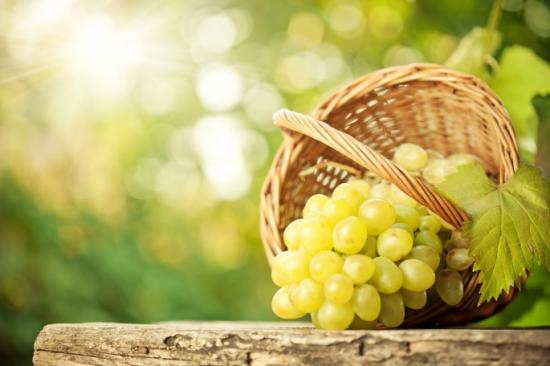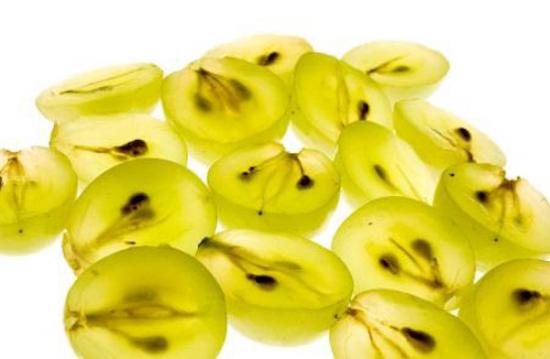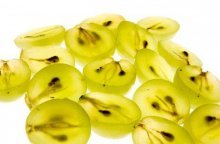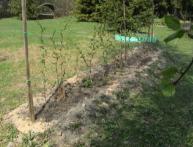Grapes from seed, how to grow a seedling yourself

Grapes are one of the plants whose cultivation is always of interest to gardeners. Currently, there are varieties and hybrids that not only manage to produce crops in temperate climates, but also withstand frosts down to -30 degrees under cover.
In the conditions of amateur viticulture, it is most convenient to obtain planting material by cuttings or purchasing a ready-made seedling.
However, it happens that there is a need to grow grapes from seed, and this is due to some characteristics of the plant, from preparing seeds to planting in the ground and caring for the young seedling.
Content:
- How to prepare grape seeds for planting
- Soil preparation and sowing of grape seeds after stratification
- Caring for seeded grapes in the first summer, waiting for the harvest
How to prepare grape seeds for planting

When deciding to grow grapes from seed, a winegrower can pursue certain goals:
- selection work
- obtaining a seedling of your favorite variety
- obtaining seedlings for decorative purposes
- cultivation rootstocks
In amateur gardening, the last three goals are justified. Successfully obtaining a seedling from a seed begins with the selection of ripe large berries, which must be kept until fully ripe.
Free the seeds from the selected berries from the pulp. To remove any remaining pulp, rinse them under running water. You can also soak them for a couple of hours.
After this, the resulting seeds should be sorted, giving preference to large specimens of beige, brown or dark brown color.
Selected seeds need stratification. It needs to be carried out over several months to increase germination.
It is optimal to start stratification no later than December. This will allow you to get a grape seedling of a size that will allow you to transplant it into open ground by the beginning of summer.
To do this, the selected seeds are placed and wrapped in a damp cloth. The bundle is placed in a plastic bag and sent to the refrigerator for 6 - 8 weeks.
Optimal temperature regime - no higher than + 3 degrees and no lower than 0. Regularly, approximately once every 10 days, grape seeds must be removed and inspected.
To prevent mold from appearing, they must be rinsed with water every time. After one and a half to two months, the hard surface shell of the grape seed will begin to crack. This serves as a signal for the end of stratification.
At the last stage, the seeds need to be placed on top of a well-moistened gauze napkin or cotton swab and placed in a warm place; a simple warm radiator will do.
There is no need to wrap or cover the top of the bones. After about three days, white and thin roots will appear on the seeds - this means it’s time to embed them in the ground.
Soil preparation and sowing of grape seeds after stratification

You can prepare the soil for growing grape seedlings from seeds yourself by mixing calcined sand, humus and garden soil in equal proportions.
Fill the planting containers with this composition, after making a drainage hole in them and filling the bottom with any drainage material.
It is advisable to take a separate glass or container for each seed. The depth of embedding grape seeds into the soil should not exceed 15 mm.
Place the seedling pots in a well-lit place; windows oriented to the south are ideal for this.
Before the seedling appears on the surface of the earth, you need to monitor soil moisture, perhaps, in order to avoid it drying out, at first you need to cover the pots with film or glass.
An important condition for germination is the air temperature; in the daytime it should be no lower than +20, at night - no lower than + 15. After eight to twelve days, the seed sprouts.
At the next stage, the grape sprout obtained from the seed must be provided with mineral and organic fertilizers, moderate humidity and sunlight for at least 8 hours a day.
At this stage, feeding the seedling should be done at least once every ten days, alternating the application of nitrogen fertilizer with phosphorus. Regular loosening has a good effect on the growth of grapes.
When the grapes reach a size of 10 cm, then the issue of its further growth needs to be decided.
If planned indoor growing, then the seedling needs to be transferred into a pot with a volume of at least three to four liters; if in the future the bush grows in the garden, then until the onset of summer it can be left in the same container, and in the first days of June planted in open ground after preliminary hardening in the open air.
It is desirable that at the time of transplantation the height of the shoots is at least 25 - 30 cm.
Before planting in a permanent place, the seedling must be taken out into the open air for several days.
If it grew in poor light, it must be “accustomed” not only to the street temperature during the day and night, but also to bright sunlight so that the leaves do not get sunburned.
Caring for seeded grapes in the first summer, waiting for the harvest

The grown seedling should be transplanted into the garden in a sunny, windless place, in a planting hole filled with a mixture of humus, sand, and garden soil.
After embedding the roots of the seedling into the ground, you need to install a vertical support. During the first summer, grapes grown from seed must be loosened and watered, and the weeds under them must be regularly pulled out.
With good care and favorable weather, during the first summer the above-ground part will reach a height of one meter, and the root system will grow and strengthen.
It is better to start formative pruning no earlier than the third year of life. With the correct selection of varieties for cultivation through seed sowing, in three to four years you can see the first harvest.
It is best to use seeds from the following grape varieties:
- Chaush
- Mascot
- Northern
- Taiga
- Delight black
- Laura
If grapes are grown for their berries, then in order to evaluate how much the properties and taste of the original berries have been transferred to the seedlings from the seed, it is advisable to get several bushes, since not all of them will be similar to the original version, and some will simply be wild, unvarietal grapes.
If grape was grown for decorative purposes, then any bush obtained from seeds will be suitable for vertical gardening of the site.
Regardless of the result, the experience of growing grapes from seed will be useful to any gardener and winegrower.
A striking example of grapes grown from seed:
Interesting information about the vegetable garden










